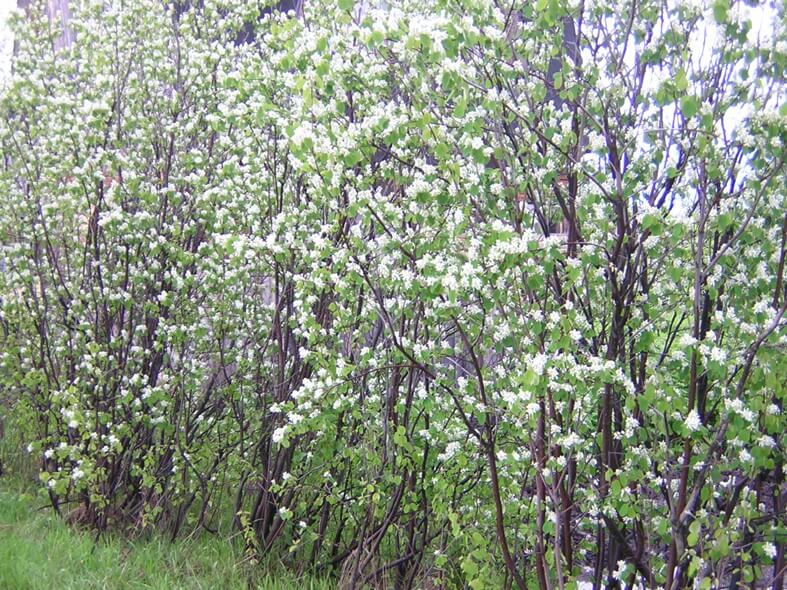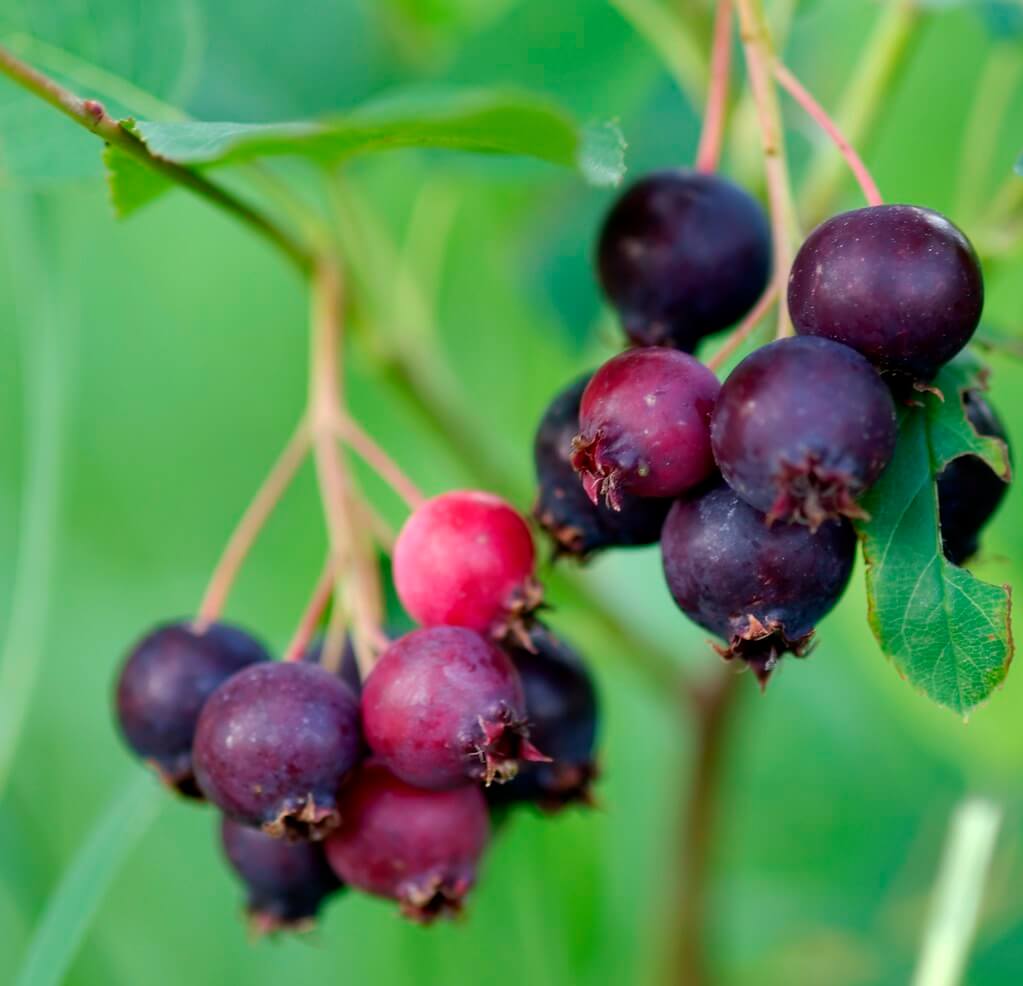
(Source: Borealis55/Wikimedia Commons)
Juneberry (Amelanchier), also known as saskatoon, serviceberry, or wild-plum, is a genus comprised of more than 20 species of deciduous shrubs. It belongs in the Rosacea family, meaning that it’s related to roses. Most juneberry tree species are native to North America. In fact, almost every US state has a native juneberry tree species. These trees are known for their small, dark red or purple fruits which ripen in June, hence the name. Juneberry trees are also popular for their beautiful foliage and delicate white flowers.
Edibility and culinary use
Juneberry trees produce delicious fruits. These fruits have a rich, sweet taste with a hint of nuttiness. Some describe it tasting almost as apples and blueberries combined. These berries taste wonderful fresh but they can also be dried, preserved, canned, or cooked. Some even make wine, beer, cider, and tea using these berries.
If you’re lucky enough to find juneberry trees around your home, be sure to harvest them. You can eat them right away or use them to substitute other berries in many different recipes. Juneberry tastes especially great as a jam and pie filling. However, if you can’t find any juneberry tree nearby, you can still try these berries by purchasing from your local farmer’s market or health store. Saskatoon berries, one of the more popular species in this group, are harvested commercially and quite popular in North America.
Health benefits

(Source: drbarronoss/Flickr)
The sweet juneberry isn’t only delicious, but it’s also nutrient-dense. Juneberry fruits are rich in vitamins A, C, and E as well as essential minerals, such as iron, calcium, potassium, manganese, and copper. Moreover, it’s also full of fiber, protein, flavonoids, and antioxidants. That’s why eating juneberries are very beneficial for your health. It can help boost your immunity,
Aside from the fruits, other parts of the juneberry tree also have some medicinal uses. For example, you can boil the root bark to make herbal tea. This herbal tea can help treat excessive menstrual bleeding, alleviate menstrual pain, and stop diarrhea. An infusion made from the juneberry tree’s inner bark can also be used as a disinfectant wash.
Cultivation
Certain species in this group, such as the saskatoon serviceberry (Amelanchier alnifolia) and common juneberry tree (Amelanchier lamarcki), are usually cultivated as ornamental shrubs. Juneberry trees can be an absolutely delightful addition to any garden. Its rich green foliage will look lush all throughout the summer. Then in the fall, it will look warm and golden. Moreover, its white flowers and dark red fruits will bring a pop of color to your garden throughout the year.

(Source: Meggar/Wikimedia Commons)
If you’re looking for a good hedge plant, then the gorgeous juneberry tree is for you! It’s relatively easy to maintain, plus you get a steady source of sweet and juicy berries. These trees will thrive in rich, loamy soil. Juneberry trees need a good amount of water to thrive, so make sure to water them regularly to keep the soil moist. Juneberry trees will produce more berries in sunny locations, but they can tolerate some shade as well.
You should be able to get seedlings and young saplings from local plant nurseries all year round. It’s recommended to let them grow in a pot first before transferring them to their permanent locations in your garden. Plant the juneberry trees in your garden in the summer once they’re large enough to handle and water them regularly. They should start flowering by the next spring. The fruits will start to appear by midsummer. Make sure to harvest the berries immediately once they’re ripe. Otherwise, birds will completely strip off the juneberry trees of their berries.
Cautions
There are no known hazards from eating juneberries. They are safe to eat in moderation.
Conclusion
Delicious and nutritious, juneberries are truly a great fruit. While you can find wild juneberry trees growing all across North America, it’s always a good idea to plant some trees in your own garden. That way, you wouldn’t have to compete with the local birds to get your hands on these delectable berries. On top of being a convenient food source, the trees’ foliage will also make your garden look amazing all year long.
---------------
Writen by Cornelia Tjandra
Cornelia is a freelance writer with a passion for bringing words to life and sharing useful information with the world. Her educational background in natural science and social issues has given her a broad base to approach various topics with ease. Learn more about her writing services on Upwork.com or contact her directly by email at cornelia.tjandra@gmail.com
Many of our readers find that subscribing to Eat The Planet is the best way to make sure they don't miss any of our valuable information about wild edibles.
See our privacy policy for more information about ads on this site






